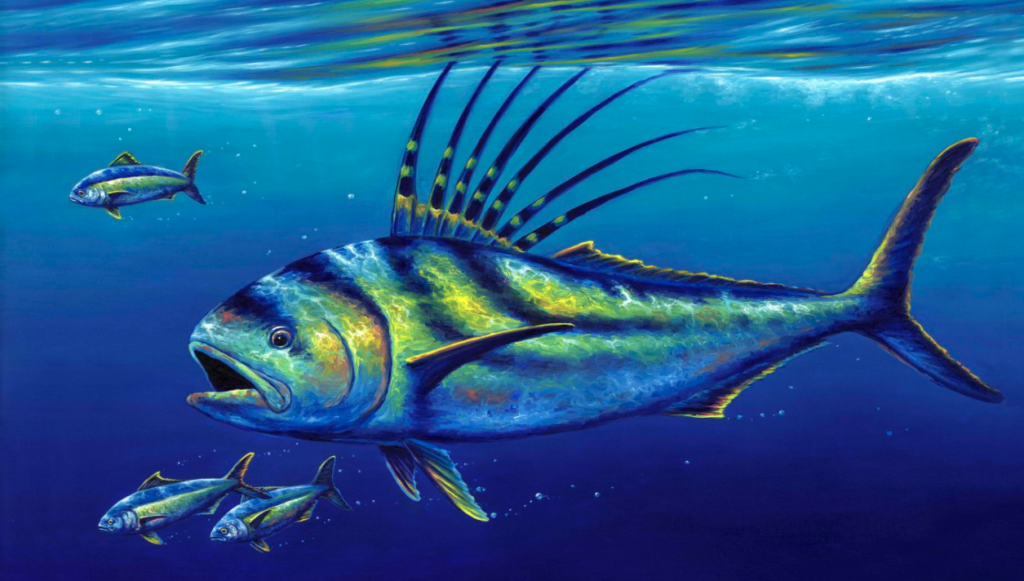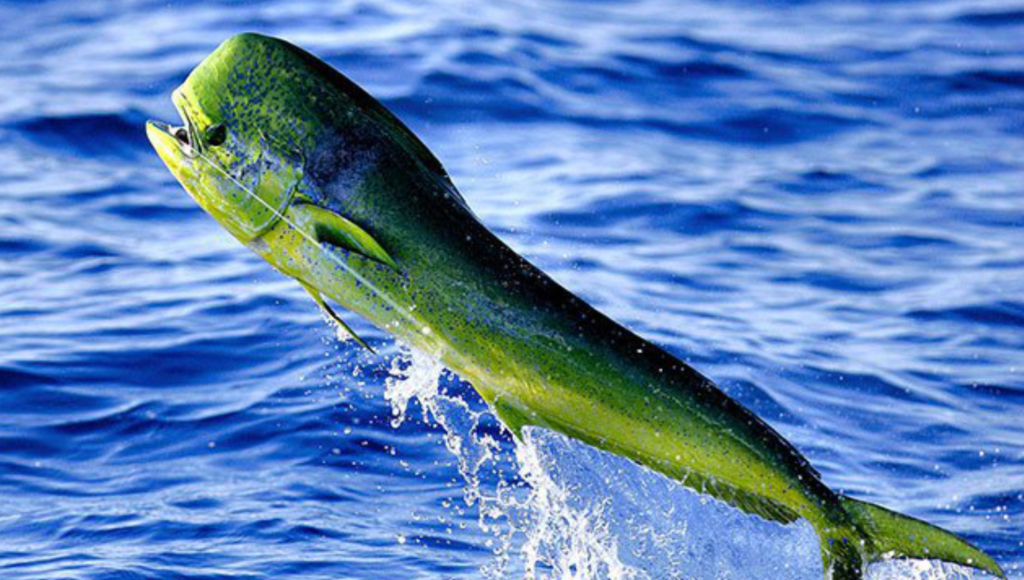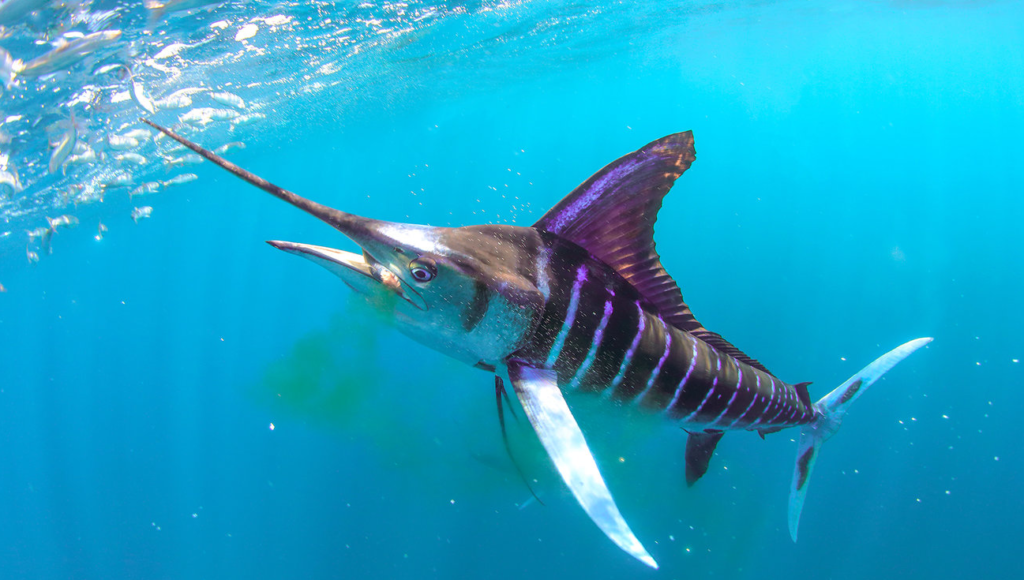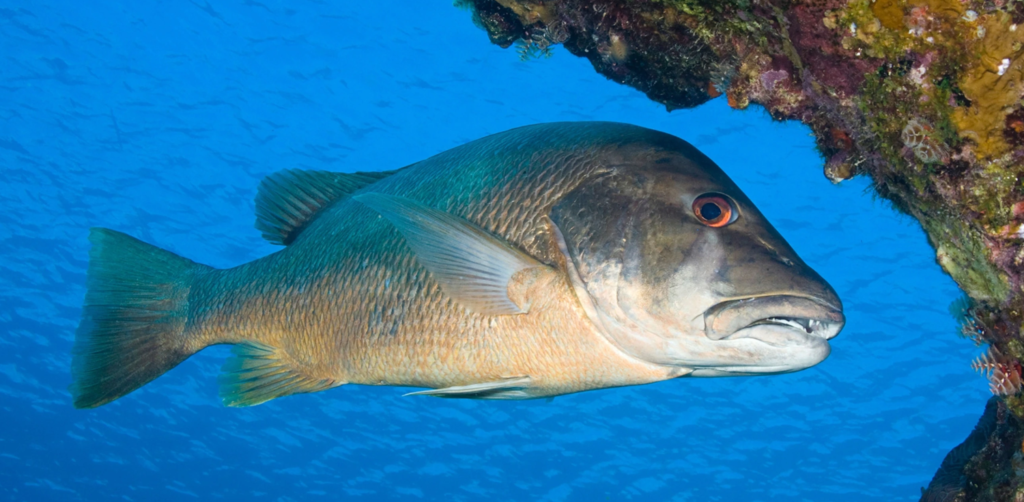Saltwater Game Fishing

Here’s a how-to on catching various saltwater gamefish, courtesy of Saltwater Sportsman.
A broad variety of saltwater game fish awaits anglers of every persuasion, from weekend afternoon snapper and grouper fishermen looking for a tasty dinner, to the most hard-bitten tournament and competitive anglers on blue water or tidal flats.
Seaworthy offshore boats take their choice among billfish, tuna, kingfish, or dolphin, but have no edge on fun and excitement over the inshore game fish angler hunting the shorelines and inshore waters for redfish, snook, tarpon, or flounder. Saltwater fishing may be simple and economical or time and money intensive, but the challenge and the lure remains the same for anglers at all levels of expertise and commitment.
Wahoo

Four effective ways to rig swimming plugs for trolling.
The vivid vertical stripes and long, slender body make this voracious member of the mackerel family unmistakable; the mouthful of sharp teeth identify it as a voracious striking predator in all offshore waters where it occurs, from the Middle Atlantic and Bermuda, through Florida, the Bahamas and Caribbean; Gulf of Mexico; and in the Pacific from California to Panama and Hawaii.
The most effective angling technique is often trolling deep in the water column around rips, weedlines and upwellings resulting from deep structure. However, they may be taken near the surface as well, on drifted live baits or lures trolled or cast around weedlines and flotsam. Wahoo prefer a faster trolling speed than most other offshore species, and spoons, plugs, skirted lures and feathers all produce, but must be rigged on wire or cable leader to prevent cutoffs.
Most commonly caught in the 20- to 50-pound range, they are often found approaching 100 pounds, and record specimens reach 150-pounds plus. The firm, white flesh is excellent in a variety of preparations.
Tuna
For strength and speed, tunas offer unmatched challenge as elite big game species.
Somewhere, somehow, yellowfin tuna are biting along North Carolina’s Outer Banks.
Technically the tunas are part of the mackerel family, Scombridae, but for anglers’ purposes, they fall under the genus Thunnus, apart from kingfish, wahoo, mackerel, and other members of the family. The mostly pelagic tunas, from the diminutive bonitos, often favored as bait for larger bluewater predators, to bluefins, that can top half a ton, offer a range of sport in the world’s oceans, on an equally varietal range of tackle, from fly-rods to 130-pound trolling gear, on everything from feathers, to live baits and trolled lures.
The middleweights, blackfins in the Atlantic, which run to 40-pounds, and albacore in the Pacific, generally 20 to 40 pounds, provide fast action to trolled baits and lures around rips and seamounts on medium tackle. For strength and speed, the royalty of the oceanic tribe, bluefins, yellowfins and bigeye offer unmatched challenge as elite big game species; and provide some of the best table fare that swims.

Roosterfish

When the bite is hot, Roosters will also hit a dead bait using the same method. Depending on the strength of the current you may need to add a little weight to the get the bait further down in the water. Once hooked the Rooster will dig, violently shake his head and make several runs after seeing the boat.
A Roosterfish in the 70lb+ class will give any angler a good 1 hour fight before being carefully release back into the ocean.
While catching Roosterfish using live bait is the most productive method for numbers, catching one on a top water bait is a blast. We cast large top water plugs in bright colors right next to the rocky points. Roosters will aggressively hit these plugs often missing them and coming back over and over.
Often times, you will see 2 or 3 fish chasing the same plug, this is a heart pounding sight every serious fisherman needs to experience!
Dorado
The dorado’s fighting spirit, acrobatic nature and superb quality as table fair make it a favorite of game fish anglers worldwide.
The neon-bright blues, yellows and greens splattered all over its body make dolphin easy to identify, and its fighting spirit, acrobatic nature and superb quality as table fair make it a favorite of game fish anglers worldwide.
Found offshore, and sometimes nearshore, in tropical and subtropical waters of the Atlantic, Pacific and Indian oceans, as well as the Caribbean and Mediterranean seas, dorado live only 4 to 5 years, but grow incredibly fast. They reach a weight of 2 to 3 pounds in under 3 months, 30 pounds in about a year, and some grow to exceed 60 pounds.
Also called mahi-mahi, dorado gravitate towards large clumps of floating sargasso and other flotsam, in search of cover and forage hiding underneath. Juveniles travel in large schools of similar-size fish, while large adults mostly travel in pairs or trios – usually a bull (male), which sports a tall, square forehead, and 1 or 2 cows (females), with a round, less prominent forehead.
Though primarily a pelagic species, dorado will dive hundreds of feet on occasion. Flying fish are a favorite prey, but these opportunistic feeders will happily consume squid, and a wide range of baitfish, and juvenile finfish and crustaceans.

Marlin

Brute strength, speed, stamina and a flair for acrobatics make marlin highly coveted targets of offshore anglers.
Pro strategies for trolling and bottomfishing
Brute strength, speed, stamina and a flair for acrobatics make marlin highly coveted targets of offshore anglers. Of course, marlin aren’t all one same billfish species, but five highly migratory pelagics: Atlantic blue marlin, which can weigh upwards of 1,500 pounds, and occur in the warmer waters of the Atlantic Ocean, Gulf of Mexico, and the Caribbean and Mediterranean seas; Pacific blue marlin, which attain similar size and are found in tropical, temperate regions of the Pacific and Indian oceans; Black marlin, another species that achieves grander status (weighing 1,000 pounds or more) and are found in warm, tropical stretches of the Pacific and Indian oceans, often closer to shore than blues; Striped marlin, which seldom weigh as much as 400 pounds, also roam the tropical expanses of the Pacific and Indian oceans, and are known to come nearshore in pursuit of schooling baitfish; and white marlin, the smallest of the five species, which rarely exceed 100 pounds, and occur in many of the same areas where Atlantic blues thrive.
Blues and blacks prey on various members of the tuna and mackerel families, as well as dolphin, squid, flying fish and more. Striped marlin favor mackerel, sardines, anchovies, sauries, caballitos (goggle-eyes), and squid. The smaller whites opt for whatever prey are most readily available, and are known to strike a wide range of baits, including ballyhoo, mullet, mackerel, herring, flying fish, squid and others.
Snapper

The snappers are voracious feeders, with the teeth to back it up, and will hit cut baits, live baits, shrimp, and lures.
Easily combine the sweet, delicate flavor of snapper with the tartness of citrus.
The snappers comprise a large family of fish similar in habit and appearance: There are 13 of them in the Atlantic and Gulf of Mexico, and nine more in the Pacific, but few of these make it as far north as southern California. Most, with the exception of immature gray snapper common to the mangrove country, inhabit offshore reefs, rocks and other structure.
Most snappers run just a few pounds. The yellowtail snapper of the South Florida and Keys reefs commonly hit 4 or 5 pounds; the popular mutton snapper average 5 to 15 pounds; the coveted red snapper may top 20 pounds; and bruiser Cubera snapper on the reefs, may scale up to 80 pounds. The snappers are voracious feeders, with the teeth to back it up, and will hit cut baits, live baits, shrimp, and lures, and a careless angler’s fingers; but in clear water they can get cautious and difficult to fool. All are exceptional on the table.
